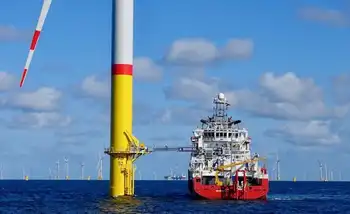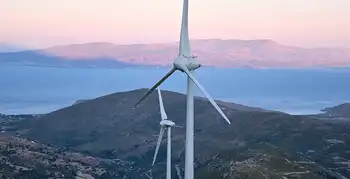Wind's chill factor
A claim is contained in a new study released by the Energy Department's National Renewable Energy Laboratory, and technically it might be true. But we've heard these overblown predictions before, and experience around the world with heavily subsidized alternative energy has not worked out well.
The area in question, called the Eastern Interconnection, is a grid extending roughly from the western borders of the Plains states through to the Atlantic Coast, excluding most of Texas. It includes Nantucket, where supporters of the Cape Wind project have been tilting at windmills for years.
The Cape Wind project proposes erecting 130 wind turbines that would generate electricity equivalent to about 75% of Cape Cod's energy needs.
The best site is Horseshoe Shoal in Nantucket Sound. Unfortunately, this body of water sits between the Kerry home on Nantucket Island and the Kennedy compound at Hyannis Port on the Cape and might spoil the view.
Considering the resistance this one project has had, one wonders how you build the wind farms and the 22,697 miles of EHV (electric high voltage) transmission lines to service the Eastern Interconnection. The time frame is short: 14 years. The cost is exorbitant: $93 billion just for the transmission lines. And the question is a big one: Where do you put them for proper power reach?
As we've evolved from a NIMBY (not in my backyard) nation to a full-fledged BANANA (build absolutely nothing anywhere near anybody) republic, power lines aren't too popular. Seems that every other square foot is the protected habitat of an endangered critter or a "pristine" part of the earth that must be preserved.
Wind turbines generally operate at only 20% efficiency compared with 85% for coal, gas and nuclear plants. A single 1,000-megawatt nuclear power plant would generate more dependable power than 2,800 1.5-megawatt occasionally operating wind turbines sitting on 175,000 acres.
Wind provides only 1% of our electricity compared with 49% for coal, 22% for natural gas, 19% for nuclear power and 7% for hydroelectric. To replace natgas' 22% with wind would require building 300,000 1.5-megawatt turbines occupying an area the size of South Carolina. Again, ask the NIMBYs where they want them.
We have advocated a new Manhattan Project to build new nuclear power plants. We are the Saudi Arabia of coal, and our shale oil reserves by themselves dwarf Saudi oil reserves by a factor of three. And this doesn't count the Arctic National Wildlife Refuge or the Outer Continental Shelf.
As the men of La Mancha have found out, tilting at windmills may be entertaining, but the answer to our economic and energy woes is not blowin' in the wind.
Related News

Key Ontario power system staff may end up locked down at work sites due to COVID-19, operator says
TORONTO - A group of personnel key to keeping Ontario's electricity system functioning may end up locked down in their control centres due to the COVID-19 crisis, according to the head of the province's power operator.
But that has so far proven unnecessary with a change-up in routine, Independent Electricity System Operator CEO Peter Gregg said.
While about 90 per cent of staff were sent to work from home on March 13, another 48 control-room operators deemed essential are still going into work, Gregg said in an interview.
"We identified a smaller cohort of critical operations room staff that need to go in…





